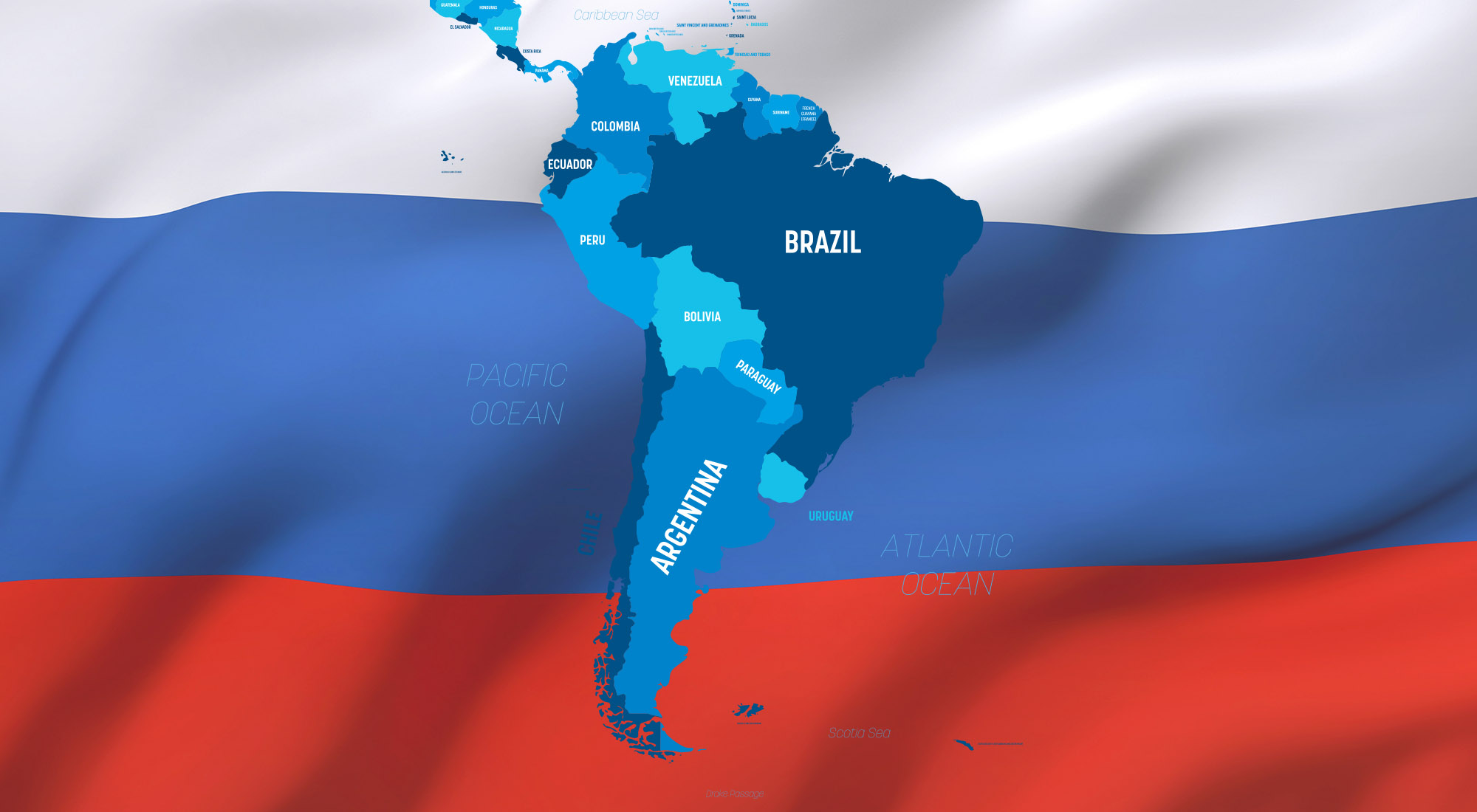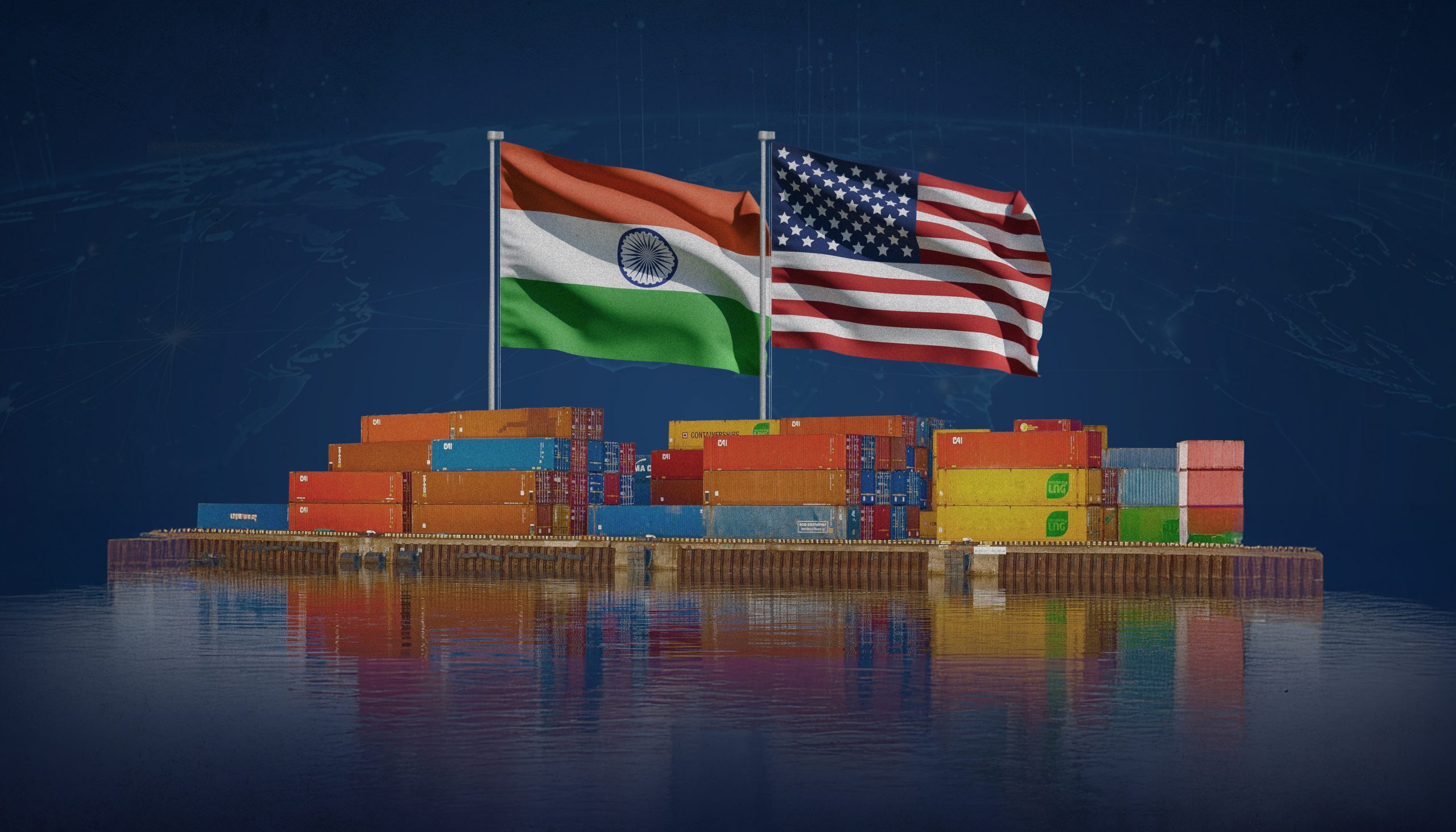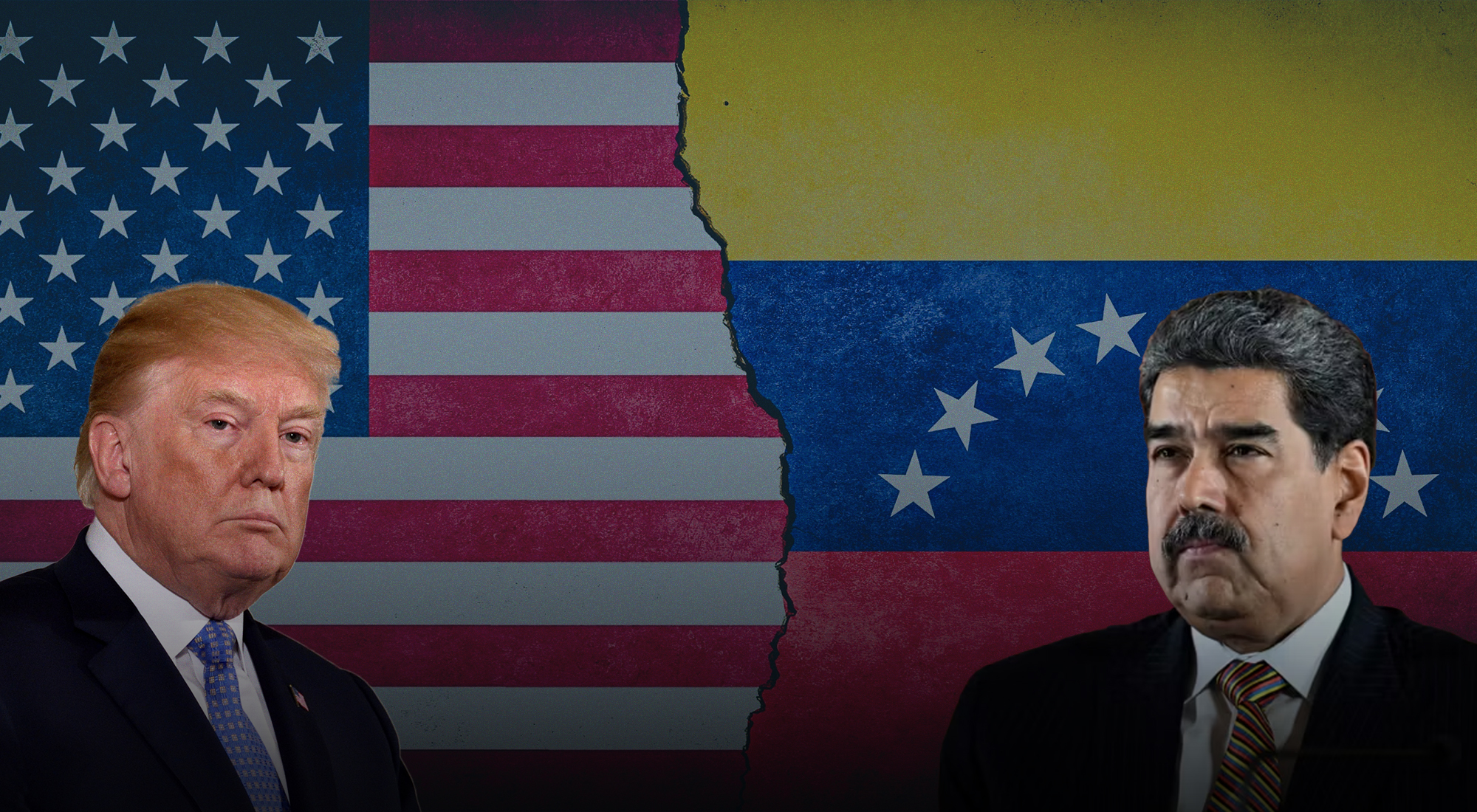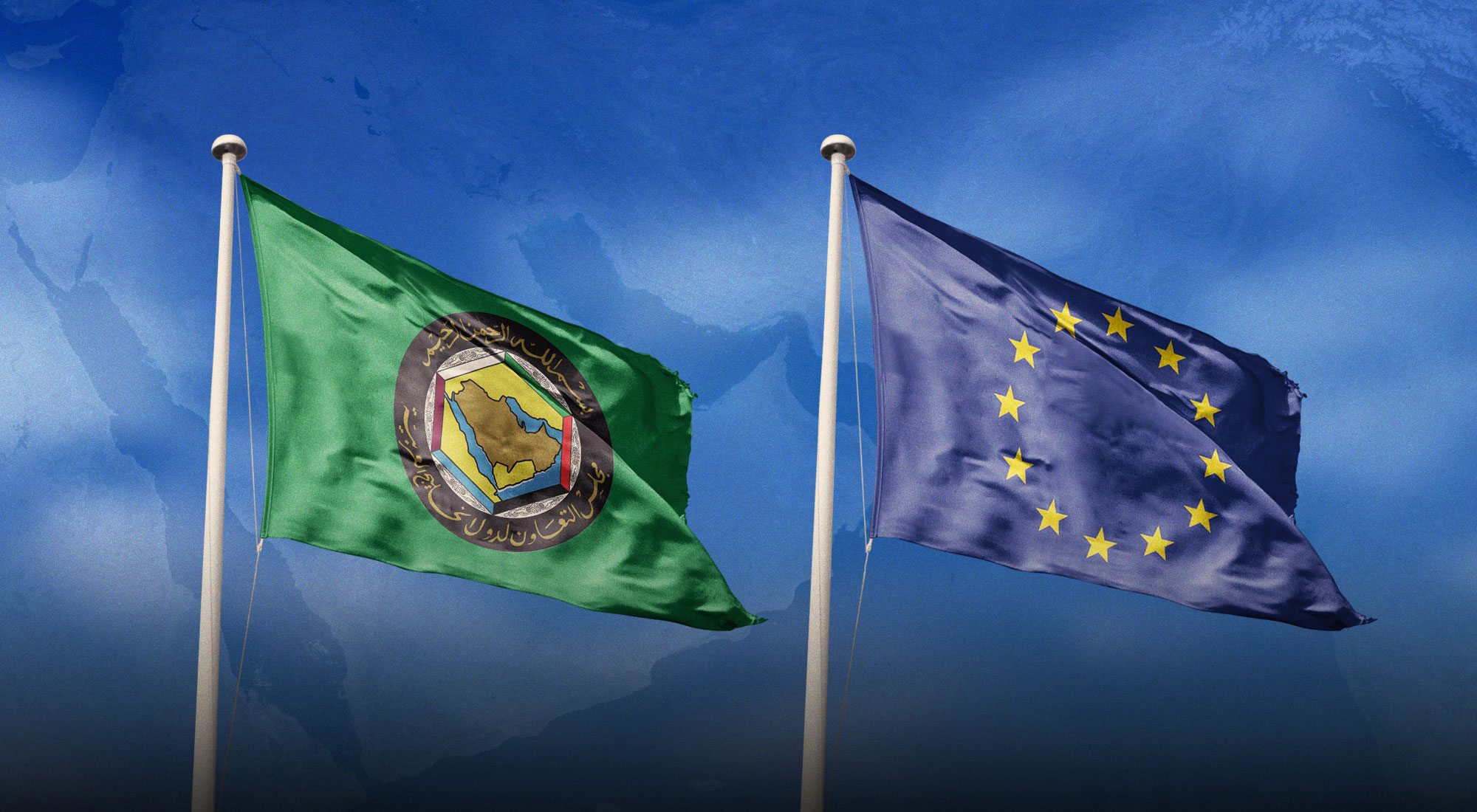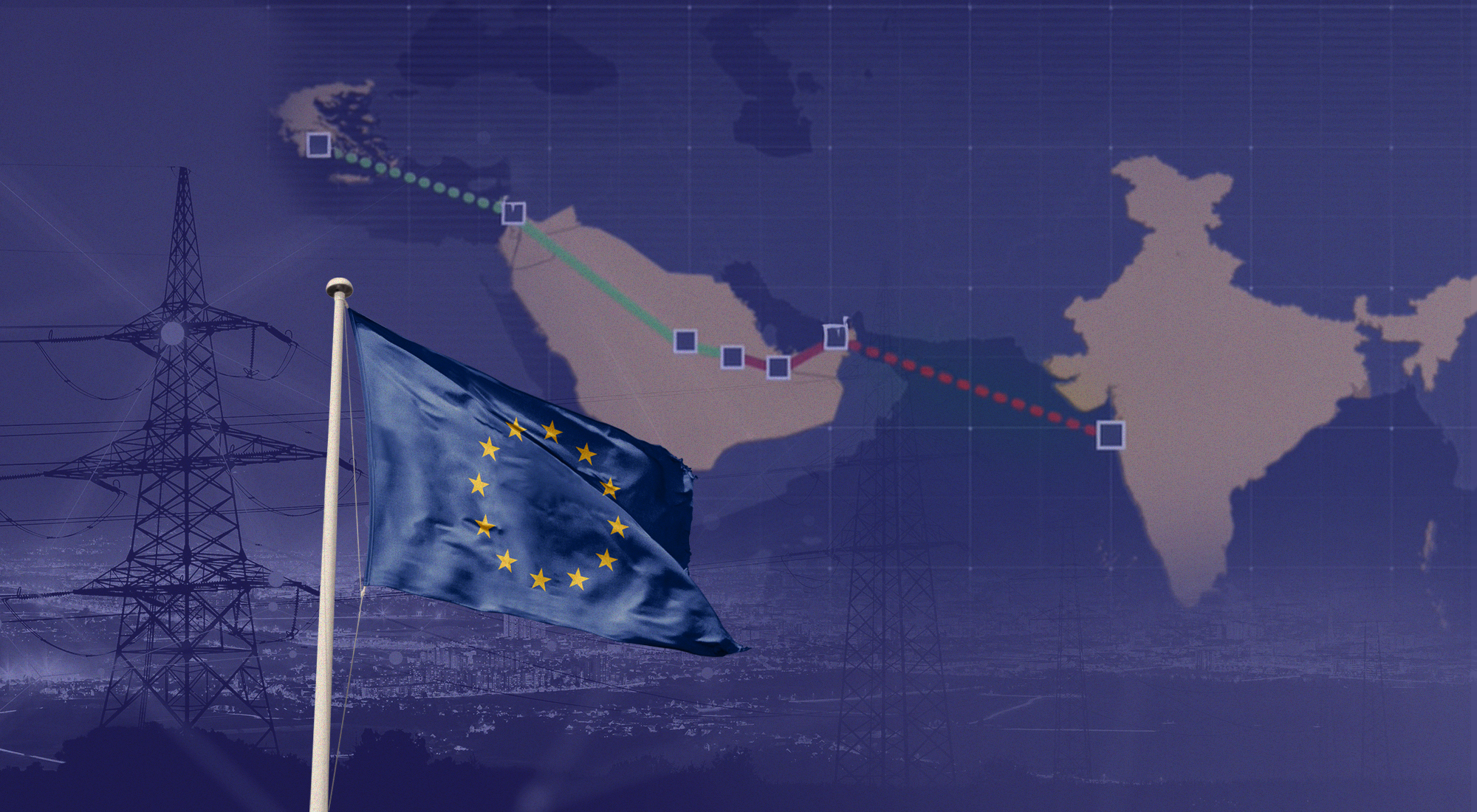At a time when most of the world is accompanying the West in condemning Russia’s war in Ukraine, Latin American countries are sending a very mixed message. Venezuela, Cuba, Nicaragua, and Bolivia refused to condone Russia’s actions,[1] but the other countries in the region publicly condemned Russia’s attack on Ukraine. In practice, however, they have behaved differently. For instance, so far none of the countries in Latin America have sanctioned Russia,[2] and countries such as Argentina and Brazil have been indirectly undermining the West’s attempts to isolate Russia. On February 15, as tensions between the United States, NATO, and Russia were peaking, Brazil’s President Jair Bolsonaro paid Russian President Vladimir Putin a visit in Moscow to discuss the international geopolitical situation and tensions in Europe, as well as how to cooperate in cyber security and the development of Unmanned Aerial Vehicle combat systems.[3] Argentina has also been trying to maintain friendly relations with Russia, and in late June 2022, applied to become a member of the BRICS group,[4] an economic association among emerging economies — Brazil, Russia, India, China, and South Africa — specifically promoted by Russia and China to challenge Western financial dominance.[5]
Since the declaration of the Monroe Doctrine, South and Central America were supposed to be in the political sphere of influence of the U.S. So how did Russia manage to pursue these countries, and why are they not on board with U.S. and Western policies? To answer this question, we must understand the roots of Russo-Latino relations, which can be traced back 200 years ago to the Romanov dynasty.
The Dawn
In 1787, Russian Empress Catherine the Great hosted Francisco de Miranda, a Venezuelan military leader and revolutionary leader against Spanish rule over Latin America.[6] Miranda received such generous hospitality from Russian nobles, specifically Prince Grigory Aleksandrovich Potemkin, that he prolonged his visit to Russia and turned what was supposed to be a short trip into a “grand tour.”[7] Miranda was looking for help in Europe for his liberation movement against Spanish colonists, and since Russia, unlike a number of European states, never had colonial possessions in Latin America, he found Russians to be suitable candidates. Miranda received a positive response from the Russians and Catherine, who ordered Russian embassies across Europe to assist Miranda in his revolutionary endeavor and provided him with diplomatic immunity by extending him a Russian passport.[8] This marked the beginning of Russia’s long-lasting political meddling in Latin America.
Despite Russian and other European support, Miranda did not succeed in his mission. However, the “Miranda Experience” provided Russia with effective sophistry: “Russia never participated in colonization, thus Russia is a trustworthy partner.” Sergey Lavrov, Russia’s current Foreign Minister, even used the equivocation recently to present Russia as a reliable partner that deserves a closer relationship with Latin America. “Russia never participated in colonizing the region,” said Lavrov in February 2022.[9] At the same time, Russia was preparing its army to attack Ukraine, a country that in 1994 Russia promised it would never attack.[10]
A century later, the Russian Empire found an opportunity to harvest what Catherine the Great planted with the Miranda Experience, and in 1878 Russia established formal diplomatic relations with the Empire of Brazil, a process that culminated in a visit to Russia by Emperor Dom Pedro II and a meeting with Tsar Alexander II.[11]
Just as the foundation of Russo-Latino relations had been built, however, Anglo-American naval and political domination over the Atlantic Ocean and waves of political chaos in Russia prevented the Russian Empire from expanding its presence in the region. Despite the resulting 1917 revolution, the successors of the Russian Empire, the Soviet Union, did not forget the Latin American mission.
The Rise
Soviet-Latin American relations began in the 1920-30s. The first diplomatic relations were established with Mexico (1924), Uruguay (1926), and Colombia (1935). For about two decades, Russo-Latino relations did not have a strategic nature. The Yuzhamtorg joint-stock company, which had a monopoly over Soviet trade, and the Commentariat,[12] which was the Soviet Union’s propaganda machine, were charged with facilitating connections between the two regions. Some trade took place, but most of the exchanges were cultural and scientific.[13] A highlight of this pre-WWII era was a theater tour of Latin America by prominent Soviet artists from the Moscow Chamber Theater such as Sergei Eisenstein, Vladimir Mayakovsky, and Nikolai Vavilov.[14] In return, major South American cultural figures such as Diego Rivera, Peruvian poet César Vallejo, and the world champion Cuban chess player, José Raúl Capablanca, visited the Soviet Union.[15]
In 1941, however, Nazi Germany’s invasion of the Soviet Union changed the dynamic of Russo-Latin relations. Moscow’s propaganda machine introduced the USSR as a force of resistance against all kinds of tyranny, especially fascism. The slow but steady pace of cultural influence of the Soviet people over Latin America was expedited, and by July 1946 the Soviet Union had established significant diplomatic relations with all 14 states of Latin America.[16]
The Kremlin was keen to not lose its momentum and immediately after establishing a diplomatic presence in Latin America, it organized an inter-parliamentary exchange with the 14 countries of Latin America. In 1956, the first parliamentarian delegations from Brazil and Uruguay arrived in the USSR,[17] and in 1958 delegations of the USSR paid their first visits to Latin America.[18] The two sides have exchanged dozens of delegations of their respective legislative institutions since, demonstrating the great influence of this initiative.
WWII was not the only a war that shaped the nature of Russo-Latin relations; the rapid emergence of another type of war with a different dynamic started to impact Moscow’s Latin America strategy. The rising escalation in the Cold War between the U.S. and the Soviet Union shifted more of the Kremlin’s attention to the region than ever. The Soviet Union found Latin America valuable in this era for a number of reasons. Given the region’s massive financial gap between rich and poor and high rates of poverty and youth unemployment in the region, there was an audience sympathetic to Communist ideology. Strategically, the votes of Latin American countries in the newly established United Nations could potentially bolster Soviet influence in the General Assembly. Geographically, Latin America’s proximity to the U.S. represented a potential new front should Moscow spend resources to establish a military presence in the region. This would force the U.S. to divert its attention from Europe and Southeast Asia and defend a region that was in its own backyard. It also gave the Kremlin a potential base from which to threaten the U.S. mainland; this threat would come into play in 1962 during the Cuban Missile Crisis.
The Soviet Union’s aim to spread socialism and boost its influence in the region came to fruition from the 1950-70s in what would become known as the Great Revolutions. Anti-imperialist movements across the region grew, and socialist regimes took over in Bolivia (1952) and Cuba (1959), modifying the regional balance of power in favor of the Soviet Union. Soviet–Latin American relations began to intensify and expand, especially in the realms of military and finance.[19]
The Soviet Union viewed Cuba as its main gateway to Latin America, and its revolutionary forces as a major instrument to expand its influence in the region, and the U.S. intelligence community knew it.[20] Moscow could also hold up the Cuban Revolution as a successful example of Marxist-Leninist ideology and therefore an alternative to insufficient regimes in Latin America.[21]
In the 1970s, the Russians and their Latin American partners consulted on issues of mutual interest, including expansion of trade and economic relations that resulted in the establishment of trade between the USSR and all countries in Latin America in 1970s.[22] In addition, Russo-Latin delegations regularly met at sessions of the UN General Assembly of foreign ministers, and constantly exchanged thoughts at the UN and other international organizations.[23] The highlight of this decade was the trip of Chilean President Salvador Allende to the USSR in 1972,[24] indicating that Chile was determined to become the second Cuba for the Soviet Union and the anti-imperialist movement in the region.
The 1980s were the peak of the USSR’s influence in Latin America. Diplomatic relations were formalized with 17 countries in the region,[25] and established but not formalized with two others — Guatemala and the Dominican Republic.[26] The scope of the partnerships expanded to include politics, economics, and public relations in addition to cultural and scientific exchanges,[27] and more Latin American leaders visited the Kremlin.[28]
The Fall
The rise of Mikhail Gorbachev spelled a fall for Russo-Latino relations. Gorbachev took over as leader of the Soviet Union in 1985 and started a dramatic campaign of policy reforms at home and abroad. His new foreign policy doctrine called the “New Thinking” was based on the belief that the Soviet Union’s resources and infrastructure could no longer sustain the international adventures that Leonid Brezhnev oversaw during his tenure as leader from 1964-82.[29] According to New Thinking, the Soviet Union needed to distance itself from an ideologized foreign policy based on Vladimir Lenin’s notion of placing international relations alongside class struggles.[30] Instead, Gorbachev’s Kremlin would focus on cooperating with the West based on mutual security and interdependence.[31] De-escalation with the West would end the costly Cold War and enable the Kremlin to execute “Perestroika,” a program of internal economic reform.[32]
To achieve these foreign policy goals, Gorbachev rethought many of the USSR’s entanglements abroad. He decided to end the Afghanistan war, which he inherited from his predecessors —Brezhnev, Yuri Andropov, and Konstantin Chernenko — but he also stopped support for revolutionary forces in Third World countries, including Latin American countries, in a bid to taper the expensive arms races with the U.S.[33] This shift in foreign policy marked the fall of Russo-Latin Relations, although Gorbachev did not get much of a chance to implement his New Thinking, since in 1991 the Soviet Union collapsed.
The Return
After the collapse of the Soviet Union, Russia found itself far behind its traditional rival in the Great Power Competition. The new Russian statesmen realized that Moscow did not have either the economy nor the military might to solely challenge the U.S.’s position as the global superpower, but that a new approach was needed. The resulting strategy, “Pivot to Multipolarity,”[34] was predicated on the belief that Russia’s only option to protect its international influence in the world was to advocate for a multipolar global order.[35] To achieve this, Yevgeny Primakov, Russia’s Prime Minister from 1998-99 and Foreign Minister from 1996-98, suggested that Russia must form a strategic triangle with emerging non-Western global powers, China and India,[36] and expand its presence in the developing world.[37]
Latin America was once again a priority of Russian foreign policy. Post-Soviet Russia’s return to the region would provide Moscow with new profitable partners and strengthen Russia’s position in the emerging multipolar world. Latin American countries’ abundant natural resources opened up opportunities for Russian companies to participate in the exploration and production of minerals, including oil and gas. The region was also a suitable market for Russian contractors and Russian products, including, given the high level of political tension in Latin America, arms sales and military production.
Russia’s return to Latin America was not obstacle-free. In the final days of the Soviet Union, Moscow completely abandoned Cuba and left a large number of construction projects, including a nuclear power station, unfinished.[38] Trade also fell off,[39] and Russia started to develop a reputation as an unreliable partner.[40] The anti-imperialist ideological brotherhood that had been formed in the 1920s and ’30s was further undermined by the transformation of Russia’s economy into capitalism under Boris Yeltsin.[41] Many Latin American countries even decided to develop ties with the West during this period.[42]
To rebuild trust Primakov made frequent visits in 1996-97 to Latin America to sign cooperation agreements with countries such as Mexico, Cuba, Venezuela, Argentina, and Colombia. He also established a strategic partnership with Brazil, which led to the creation of the Russian-Brazilian commission for high-level cooperation.[43] The intergovernmental commission was designed as a framework in which both countries could sponsor new joint initiatives to develop strategic bilateral relations with a focus on economic, commercial, scientific, and technological cooperation.[44] Russo-Latin relations did not flourish, however, as Primakov’s efforts were overshadowed by the actions of Yeltsin, his superior. Latin American countries were skeptical of Yeltin’s radical reform of Russia into a capital market, and disagreed with his compromising stance on NATO’s bombing of Yugoslavia, which the leading states of the region (known as the Rio Group) strongly condemned.[45] When the Yeltsin Realm ended in 1999, it was a turning point in Russia-Latin relations.
Unlike Yeltsin, the new resident of the Kremlin, Vladimir Vladimirovich Putin, was keen to return to Latin America as soon as possible. Putin invited representatives of the Rio Group to the Kremlin for an informal meeting in March 2003,[46] and his timing could not have been better. Latin America was in the midst of the “Pink Tide,” a turn to the left that saw socialists win elections and the formation of the “Three Musketeers of the Left”: [47] Venezuela’s Hugo Chavez, who took power in 1998; Brazil’s Luiz Inácio “Lula” da Silva (2003); and Bolivia’s Evo Morales (2005).[48]
These countries perceived Russia as the heiress of the former Soviet Union and saw the expansion of ties with Russia as an effective instrument in their conflict with the U.S. They also seemed to be on board with the Primakov Doctrine, signing numerous joint documents during high-level meetings, indicating that the construction of a new world order should be multipolar, and not tailored to the interests of one superpower.[49] In light of this mutual global view, political ties between Russia and Latin American countries expanded, and Cuba, Venezuela, and Nicaragua formed an informal bloc that would reliably vote in favor of UN resolutions proposed by Russia and oppose decisions that could harm Moscow’s interest.
Venezuela’s purchase of Russian weapons worth $4 billion[50] kick-started the new wave of Russo-Latin relations in 2005. Brazil, Colombia, Ecuador, and Bolivia soon followed suit.[51] In 2008, after an extended trip to Latin America to visit Peru, Brazil, Venezuela, and Cuba, President Dmitry Medvedev described his trip thusly: “We [Russia] are only just starting full-fledged in Latin America, and there is no reason to either be ashamed or afraid of competition. We must boldly get involved in a fight.”[52] To prove its determination to restore relations with Latin America, the Kremlin made grand gestures that harkened to its superpower past. In November 2008, it deployed to Venezuela a naval squadron led by the flagship Peter the Great, a heavy nuclear missile cruiser, to participate in a joint naval exercise with Venezuela’s Northern Fleet naval ships.[53] In addition, two Russian strategic bombers landed at the Venezuela military naval base.[54]
In addition to military cooperation, Russia rapidly expanded its economic presence in the region. Mutual trade with Latin America grew by 44% to $12 billion from 2006-2012.[55] Russian oil and gas companies such as Lukoil and Gazprom worked in Venezuela,[56] Russian aluminum company RUSAL made large-scale investments in the bauxite industry of Guyana,[57] and Moscow-based Rosneft received a “block” of oil exploration on the Cuban shelf in the Gulf of Mexico.[58] Russian citizens can now access 25 of 33 countries in the region because of negotiations that brought down legal boundaries for visas.[59]
Despite the growth, however, Russia still lags behind when it comes to trade with Latin America, mostly because Russia has fewer financial resources to invest in comparison to the U.S., China, the EU, and India. One could argue that given the similarities between Russia and some of its Latin American partners such as Venezuela (both are oil exporters), the parties should have been able to reach a higher volume of trade.
Even though Russia did not succeed in becoming a dominant commercial trade partner in Latin America, it did present itself as a reliable security partner. In 2019, Venezuelan President Nicolás Maduro responded to a series of nation-wide protests to remove him from the office by cracking down on the protestors. In response, U.S. President Trump froze all the assets of Venezuela in the U.S., imposed a complete economic embargo against the country, and recognized the leader of the protests, Juan Guaidó, as the interim president of Venezuela. Maduro found himself in a difficult economic situation, and turned to Russia for help. In response to Maduro’s request, Moscow sent military specialists and 400 militants of the Wagner Group to Venezuela.[60] Russian companies also expanded their Venezuelan presence in areas such as engineering, transportation, and hydrocarbon development to help Maduro’s regime with industrial and technological assistance.[61] To compensate Russia, Venezuela signed over 49.99% of Citgo, a U.S.-based petroleum corporation to Rosneft,[62] and helped Russia obtain a significant share of five major Venezuelan oil fields in 2018.[63] Rosneft’s assets in Venezuela grew so much that in 2020 Russia founded a separate company, Roszarubezhneft, to oversee production and transportation of oil and oil-associated gas from the Latin American country.[64] Today Roszarubezhneft produces 125,000 barrels of crude oil per day, which is equivalent to 16% of Venezuela’s total production (788,000 barrels).[65]
Russia’s involvement in Venezuela has helped rehabilitate its image as a reliable partner who will stand with its allies on rainy days; Moscow’s support of Syria’s Bashar al-Assad was a demonstration of this on the other side of the world. Moreover, just as Cuba was the gateway to Latin America for the Soviet Union, Venezuela seems to be current-day Russia’s “New Cuba.”
A Peek into the Future
Russia seems once again to be building a special partnership with Latin American countries through political and military cooperation, the restructuring of trade and economic relations, and by developing a system of preferential conditions for the transfer and exchange of new technologies. This strategy has been driven by a strong desire among the Russian commercial sector and political establishment to find new partners across the globe; Latin America, with its huge economic potential and large number of anti-U.S. political actors, naturally appeared as a suitable target.
Putin always regarded the collapse of the Soviet Union as “the greatest geopolitical catastrophe of the century.”[66] To counter the U.S and NATO’s “containment” approach against Moscow, aimed at limiting Russia’s financial, economic, trade, political, diplomatic, and military maneuvers, Putin likely intends to regain what used to belong to the Red Empire. Therefore, cooperation with Latin America in various fields, including defense, is necessary for Russia to expand its capability for global maneuvering.
In this context, the emerging “New Cold War” between Russia and the West over Putin’s war against Ukraine will have an impact on Russia’s Latin America strategy. It is safe to argue that unless Russia’s war in Ukraine goes very poorly, to the extent that Moscow has to mobilize all its resources to focus on the conflict, Russia will continue its advancement in Latin America. As U.S. military support of Ukraine increases, the chances of Russia selling more crucial weapons to Latin American countries grows too. Russia could very well use a potential sale of advanced anti-aircraft systems or even offensive weapons to Venezuela as leverage in negotiations with the West. A quid pro quo might entail Russia canceling its delivery of weapons to Venezuela in exchange for the reduction of U.S. military support of Ukraine.
Similarly, should NATO continue to increase its presence across Russia’s border, Moscow might increase its military cooperation and naval presence in Latin America. If NATO insists on admitting Ukraine to its membership, there is a chance that Russia convinces Caracas to grant the Kremlin permission to establish a military port in Venezuela, similar to Tartus Port in Syria. This scenario would evoke the 1962 Cuban Missile crisis, and just as the Soviet Union agreed to withdraw its missiles from Cuba in exchange for the U.S. withdrawing nuclear weapons from Turkey, Russia might ask for denial of Ukraine’s application for NATO membership in exchange for shutting down its active military presence in Latin America.
Russia’s expansion in Latin America, which used to be dominated politically and militarily by the U.S., might be a ploy to divert U.S. attention away from the Middle East and Eastern Europe. This is a matter of strategic importance for Moscow given the probability of a prolonged war in Ukraine. Russia’s chances of succeeding in its ambitious agenda is a question that only time will tell.
References
[1] Marco Antonio Chuquimia, “Bolivia, Cuba, El Salvador y Nicaragua otra vez se abstuvieron de votar contra Rusia y en favor de un inmediato cese de hostilidades,” El Deber, 24 March 2022, https://eldeber.com.bo/pais/bolivia-cuba-el-salvador-y-nicaragua-otra-vez-se-abstuvieron-de-votar-contra-rusia-y-en-favor-de-un-_272075.
[2] Jonathan Guyer, “Why Some Countries Don’t Want to Pick a Side in Russia’s War in Ukraine,” VOX, 9 June 2022, https://www.vox.com/23156512/russia-ukraine-war-global-south-nonaligned-movement.
[3] “On February 16, Vladimir Putin Will Hold Talks with President of Brazil Jair Bolsonaro,” The Kremlin, 16 February 2022, http://en.kremlin.ru/events/president/news/67770.
[4] “Two New Countries Apply to Join BRICS. Details Here,” NDTV, 28 June 2022, https://www.ndtv.com/world-news/iran-argentina-apply-to-join-brics-details-here-3106443.
[5] Nazrul Nazri,“The BRICS Bloc: A Pound-for-Pound Challenger to Western Dominance?” E-International Relations, 18 May 2021, https://www.e-ir.info/2021/05/18/the-brics-bloc-a-pound-for-pound-challenger-to-western-dominance/.
[6] David M. Griffiths, “Catherine II: The Republican Empress,” Jahrbücher Für Geschichte Osteuropas 21, no. 3 (1973): 323–44, https://www.jstor.org/stable/41047623.
[7] Joseph O. Baylen and Dorothy Woodward, “Francisco de Miranda in Russia,” The Americas 6, no. 4 (1950): 431–49, https://doi.org/10.2307/978246.
[8] Ibid.
[9] Jack Nicas and Anton Troianovski, “A World Away from Ukraine, Russia Is Courting Latin America,” The New York Times, 15 February 2022, https://www.nytimes.com/2022/02/15/world/americas/russia-putin-latin-america-bolsonaro.html.
[10] Alexsander Smith and Yulia Talmazan, “Russia-Ukraine Sea Clash Puts Spotlight on 1994 Agreement,” NBC News, 29 November 2018, https://www.nbcnews.com/news/world/russia-ukraine-sea-clash-puts-spotlight-1994-agreement-n941601.
[11] Russell H. Bartley, “The Inception of Russo-Brazilian Relations (1808-1828),” The Hispanic American Historical Review 56, no. 2 (1976): 217–40, https://doi.org/10.2307/2514325.
[12] “Soviet Penetration of Latin America,” ed. Paul Saba, Unity 3, no. 6 (14-27 March 1980), https://www.marxists.org/history/erol/ncm-5/lrs-soviets-latin-america.htm.
[13] Cole Blasier, “Soviet Impacts on Latin America,” Russian History 29, no. 2/4 (Summer/Fall/Winter 2002): 481–97, http://www.jstor.org/stable/24660798.
[14] Joan Neuberger, “Neuberger: Sergei Eisenstein: Ironic Belief,” Association for Slavic, East European and Eurasian Studies, https://www.aseees.org/news-events/aseees-blog-feed/neuberger-sergei-eisenstein-ironic-belief.
[15] “Moscow (1936),” Chessgames, https://www.chessgames.com/perl/chess.pl?tid=79232.
[16] W. Alejandro Sanchez, “Russia and Latin America at the Dawn of the 21st Century,” Journal of Transatlantic Studies 8, no. 4: 362-384, https://link.springer.com/article/10.1080/14794012.2010.522355.
[17] Tobias Rupprecht, “Socialist High Modernity and Global Stagnation: A Shared History of Brazil and the Soviet Union during the Cold War,” Journal of Global History 6, no. 3: 505-528, https://bit.ly/3eEbwBd.
[18] Ibid.
[19] Kenneth Finlayson, “The 1960s: A Decade of Revolution,” Veritas 4, no. 4 (2008), https://arsof-history.org/articles/v4n4_1960s_page_1.html.
[20] “Soviet Activities in Cuba,” Testimony of Paul F. Wallner, Western Area Analyst, to the Committee on Foreign Affairs for the Ninety-Second Congress, U.S. Government Printing Office, 1972: p.11, https://www.govinfo.gov/content/pkg/CHRG-92hhrg85387p3/pdf/CHRG-92hhrg85387p3.pdf.
[21] “Soviet Polices and Activities in Latin American and the Caribbean,” U.S. Central Intelligence Agency, National Intelligence Estimate, 1982, https://www.cia.gov/readingroom/docs/19820625.pdf.
[22] Robert K. Evanson, “Soviet Economic and Military Trade in Latin America: An Assessment,” World Affairs 149, no. 2 (Fall 1986): 75–85, http://www.jstor.org/stable/20672092.
[23] W. Raymond Duncan, “Soviet Interests in Latin America: New Opportunities and Old Constraints,” Journal of Interamerican Studies and World Affairs 26, no. 2 (1984): 163–98, https://bit.ly/3D9JkQX.
[24] “The World,” The New York Times, 10 December 1972, https://www.nytimes.com/1972/12/10/archives/is-there-a-civilized-way-out-u-s-and-chile.html.
[25] Cole Blasier, “Soviet Impacts on Latin America,” Russian History 29, no. 2/4 (Summer/Fall/Winter 2002): 481–97, http://www.jstor.org/stable/24660798.
[26] James D. Cochrane, “Contending Perspectives on the Soviet Union in Latin America,” Latin American Research Review 24, no. 3 (1989): 211–23, http://www.jstor.org/stable/2503708.
[27] Gaddis Smith, “Soviet-Latin American Relations in the 1980s,” Foreign Affairs, Fall 1987, https://www.foreignaffairs.com/reviews/capsule-review/1987-09-01/soviet-latin-american-relations-1980s.
[28] W. Raymond Duncan, “Soviet Interests in Latin America: New Opportunities and Old Constraints,” Journal of Interamerican Studies and World Affairs 26, no. 2 (1984): 163–98, https://doi.org/10.2307/165467.
[29] David Holloway, “Gorbachev’s New Thinking.” Foreign Affairs 68, no. 1 (1988): 66–81, https://doi.org/10.2307/20043885.
[30] Prabhat Patnaik,“Lenin on Democracy and Class Struggle,” Social Scientist 48, no. 11/12 (November/December 2020): 3–10, https://www.jstor.org/stable/27026893.
[31] David Holloway, “Gorbachev’s New Thinking,” Foreign Affairs 68, no. 1 (1988): 66–81, https://doi.org/10.2307/20043885.
[32] “New Thinking: Foreign Policy under Gorbachev,” in Russia: A Country Study, ed. Glenn E. Curtis, (Washington: Library of Congress, 1996), http://countrystudies.us/russia/17.htm.
[33] “Gorbachev and New Thinking in Soviet Foreign Policy, 1987-88,” U.S. Department of State Archive, https://2001-2009.state.gov/r/pa/ho/time/rd/108225.htm.
[34] Paul Stronski and Richard Sokolski, “Multipolarity in Practice: Understanding Russia’s Engagement with Regional Institutions,” Carnegie Endowment for International Peace, 8 January 2020, https://bit.ly/3RONjXg.
[35] Rakesh Krishnan Simha,“Primakov: The Man Who Created Multipolarity,” Russia Beyond, 27 June 2015, https://www.rbth.com/blogs/2015/06/27/primakov_the_man_who_created_multipolarity_43919.
[36] Amresh Chandra, “Strategic Triangle among Russia, China and India: Challenges and Prospects,” Journal of Peace Studies, April 2010, https://web.archive.org/web/20150627091747/http:/www.icpsnet.org/adm/pdf/1291712546.pdf.
[37] Eugene Rumer, “The Primakov (Not Gersimanov) Doctrine in Action,” Carnegie Endowment for International Peace, June 2019, https://carnegieendowment.org/files/Rumer_PrimakovDoctrine_final1.pdf.
[38] “The Soviet Legacy: Inside Cuba’s Unfinished Nuclear Power Station,” Ex Utopia, 1 August 2014, https://www.exutopia.com/cuba-abandoned-unfinished-soviet-nuclear-power-station/.
[39] Richard G. Miles, “Virtual Russian Influence in Latin America,” Center for Strategic & International Studies, 9 May 2018, https://www.csis.org/analysis/virtual-russian-influence-latin-america.
[40] Mervyn J. Bain, “Russia and Cuba: ‘Doomed’ Comrades?” Communist and Post-Communist Studies 44, no. 2 (June 2011): 111–18, https://www.jstor.org/stable/48609651.
[41] Ibid.
[42] R. Evan Ellis, “The New Russian Engagement with Latin America: Strategic Position, Commerce, and Dreams of the Past,” (U.S. Army War College Press: 2015), https://bit.ly/3xaCI0O.
[43] Ariel Gonzalez Levaggi, “Latin America Faces Eurasian Conflicts: Assessing Regional Responses in the Age of Russia — United States Tensions,” Vestnik of Saint Petersburg University Journal: International Relations 12, no. 2 (June 2019), https://doi.org/10.21638/11701/spbu06.2019.206.
[44] “11th Brazil-Russia Intergovernmental Commission on Economic, Commercial, Scientific and Technological Cooperation,” Press release from the official website of the Government of Brazil, 26 October 2021, https://bit.ly/3TWb1CH.
[45] Olivier Corten,“Human Rights and Collective Security: Is There an Emerging Right,” in Human Rights, Intervention, and the Use of Force, ed. Philip Alston and Euan Macdonald (Oxford: Oxford University Press, 2008): p. 87-138, https://bit.ly/3RyfYjp.
[46] “President Vladimir Putin Held a Meeting with the Coordinating Troika of the Rio Group,” Office of President of Russia, 1 April 2003, http://en.kremlin.ru/events/president/news/28398.
[47] Nick Miroff, “Latin America’s Political Right in Decline as Leftist Governments Move to Middle,“ The Guardian, 28 June 2014, https://www.theguardian.com/world/2014/jan/28/colombia-latin-america-political-shift.
[48] Andrea Noel, “The Year the ‘Pink Tide’ Turned: Latin America in 2015,” Vice, 29 November 2015,
https://www.vice.com/en/article/wjazpy/the-year-the-pink-tide-turned-latin-america-in-2015.
[49] Elena Pavlova, “A Russian Challenge to Multipolarity?” Problems of Post-Communism Journal 65, no. 6 (2008): 394-408, https://doi.org/10.1080/10758216.2017.1291307.
[50] Linette Lopez, “Russia to Lend Venezuela $4 Billion to Buy Russian Weapons,” The Business Insider, 7 October 2011, https://www.businessinsider.com/russia-to-lend-venezuela-4-billion-to-buy-russian-weapons-2011-10.
[51] “Russia Became an Important Arms Supplier for Latin America, but Its Sales Have Dropped,” Navarra University, https://www.unav.edu/web/global-affairs/detalle/-/blogs/russia-became-an-important-arms-supplier-for-latin-america-but-its-sales-have-dropped.
[52] Oleg Shchedrov, “Medvedev’s Venezuela, Cuba Trips Set to Rile U.S.,” Reuters, 20 November 2008, https://www.reuters.com/article/us-russia-medvedev-latam/medvedevs-venezuela-cuba-trips-set-to-rile-u-s-idUSTRE4AJ52B20081120.
[53] “Venezuela Increases Ties with Russia,” VOA News, 1 November 2009, https://www.voanews.com/a/a-13-2008-09-29-voa46/330690.html.
[54] Ibid.
[55] Dr. Samuel Ramani, “Russia Returns to Latin America,” The Royal United Services Institute for Defence and Security Studies, 19 August 2021, https://rusi.org/explore-our-research/publications/commentary/russia-returns-latin-america.
[56] Christian Lowe and Rinat Sagdiev, “Special Report: How Russia Sank Billions of Dollars into Venezuela Quicksand,” Reuters, 14 March 2019, https://www.reuters.com/article/us-venezuela-russia-rosneft-special-repo/special-report-how-russia-sank-billions-of-dollars-into-venezuela-quicksand-idUSKCN1QV1HN.
[57] “Russia Buys into Guyana Bauxite,” The Global Trade Review, 6 February 2022, https://www.gtreview.com/news/americas/rusal-buys-into-guyana-bauxite-2/.
[58] Heidi Vella, “Offshore Cuba — Can Russia Succeed Where Others Have Failed?” Offshore Technology, 8 October 2014, https://www.offshore-technology.com/analysis/featureoffshore-cuba-can-russia-succeed-where-others-have-failed-4394847/.
[59] “Latin America Can Become Fully Visa-free for Russians,” TASS, 8 February 2019, https://tass.com/economy/1043910.
[60] Maria Tsvetkova and Anton Zverev, “Exclusive: Kremlin-linked Contractors Help Guard Venezuela’s Maduro,” Reuters, 25 January 2019, https://www.reuters.com/article/us-venezuela-politics-russia-exclusive-idUSKCN1PJ22M.
[61] Moises Rendon and Claudia Fernandez, “The Fabulous Five: How Foreign Actors Prop up the Maduro Regime in Venezuela,” Center for Strategic & International Studies, 19 October 2020, https://www.csis.org/analysis/fabulous-five-how-foreign-actors-prop-maduro-regime-venezuela.
[62] Alexandra Ulmer, “Exclusive: U.S. Investors Seek to Acquire Russia’s Rosneft Lien in Citgo,” Reuters, 26 February 2018, https://www.reuters.com/article/us-usa-oil-citgo-exclusive/exclusive-u-s-investors-seek-to-acquire-russias-rosneft-lien-in-citgo-idUSKCN1GA2J4.
[63] Anthony Faiola and Karen DeYoung, “In Venezuela, Russia Pockets Key Energy Assets in Exchange for Cash Bailouts,” Washington Post, 24 December 2018, https://wapo.st/3BtQ4YL.
[64] “Russia Sets Up Roszarubezhneft Oil Company with Charter Capital of $4.066 Billion,” TASS, 31 March 2020, https://tass.com/economy/1137775.
[65] Alexandra Ulmer and Marianna Parraga, “Russian Oil Firm Shuffles Venezuela Assets as Sanctions Bite,” Reuters, 29 March 2022, https://www.reuters.com/business/energy/exclusive-russian-oil-firm-shuffles-venezuela-assets-sanctions-bite-2022-03-29/.
[66] “Putin: Soviet Collapse a ‘Genuine Tragedy,’ ” NBC News, 25 April 2005, https://www.nbcnews.com/id/wbna7632057.



